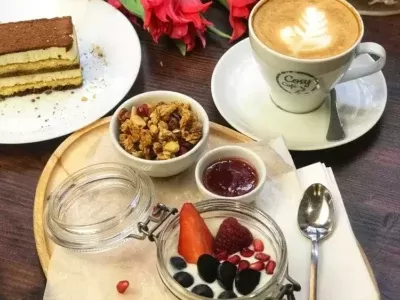There are various thoughts on having breakfast, including what to consume, when to consume it, and whether it’s essential. But believe it or not, breakfast history didn’t get much attention in the past.
Breakfast History before
Breakfast, as many of us currently think of it, did not exist for the majority of history. The Romans usually ate only one meal per day as per food historian, Caroline Yeldham, who suggests they believed it to be beneficial to their health. They were fixated on digestion and viewed eating more than once daily as a form of gluttony. Such beliefs greatly influenced people’s eating habits for an extensive period,” states the historian.
During the Middle Ages, the eating habits of people were heavily influenced by monastic life. Prior to morning mass, it was not permissible to consume any meals. It wasn’t until the 17th century that everyone began to start their day this way, regardless of social class.
Ian Mortimer, a historian from Britain, investigated how the Tudors invented breakfast for BBC’s History Extra:
“In 1558 the executors of Henry Willoughby’s estate were given a breakfast of bread, ale and a sweet dish made of eggs, butter, sugar and currants. Thomas Cogan remarked in The Haven of Health (1584) that “bread and butter” was a countryman’s breakfast. Butter became exceedingly popular. Various herbs were added to butter to impart their properties to the breakfaster: sage was thought to sharpen the wits, so this was a popular additive.
The idea that breakfast could do you good was no longer considered to apply solely to the sick and old. Indeed, in some quarters, people began to think that the old did not need breakfast at all. In 1602 the physician William Vaughan advised: “Eat three meals a day until you come to the age of 40 years.”
Modern breakfasts
Dishes such as scrambled eggs and coffee or tea were common on the tables of the wealthy. By the late 1740s, wealthier homes had breakfast rooms. In the 19th century, breakfast history and having a breakfast had become a staple in aristocratic circles.

By the 1950s, breakfast history had changed considerably: toasters, sliced bread, instant coffee, and pre-sweetened cereals became staples in American homes. Meanwhile, in rural Hungary, a hot breakfast consisting of soup, boiled egg, potatoes, and fried sausages was fashionable. When meat wasn’t available, flour-based dishes such as dumplings were eaten.
Breakfast was deemed the most important meal of the day in the 1960s, to keep fit and avoid obesity, one needs to”eat breakfast like a king, lunch like a prince, and dinner like a pauper,” an advice attributed to Adele Davis, a once popular yet controversial American nutritionist.
Fast forward to the modern era, and breakfast has become a dynamic reflection of cultural diversity. The globalization of food trade and increased international travel have led to the fusion of culinary traditions, resulting in breakfast options that range from traditional continental breakfasts in hotels to more eclectic choices like breakfast burritos, dim sum, or even leftover dinner items. Convenience has also played a significant role in shaping modern breakfast habits. The fast-paced nature of contemporary life has led to the rise of portable and on-the-go breakfast items such as granola bars, yogurt cups, and smoothies, allowing individuals to satisfy their morning hunger while juggling busy schedules.

Furthermore, the awareness of nutrition and its impact on health has influenced the way people approach breakfast and dteremine the breakfast history. Scientific research has highlighted the importance of starting the day with a balanced meal rich in protein, fiber, and vitamins. This has led to a shift away from sugary cereals and pastries toward healthier options like whole grain oatmeal, Greek yogurt with fruits and nuts, or avocado toast. As society becomes more health-conscious, breakfast has transformed from a simple sustenance-focused meal into an opportunity to kickstart the day with nourishment that fuels both body and mind, making it an integral part of the modern lifestyle.
In fact, Generation Z is shaping the new trends. We also have an article on this topic for you: What is the trendy breakfast for Generation Z right now?
